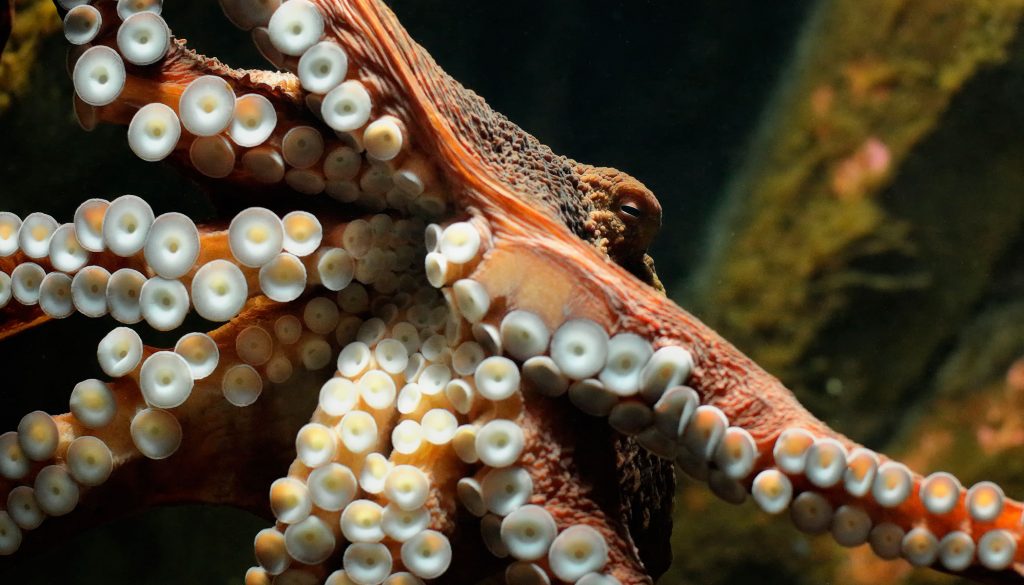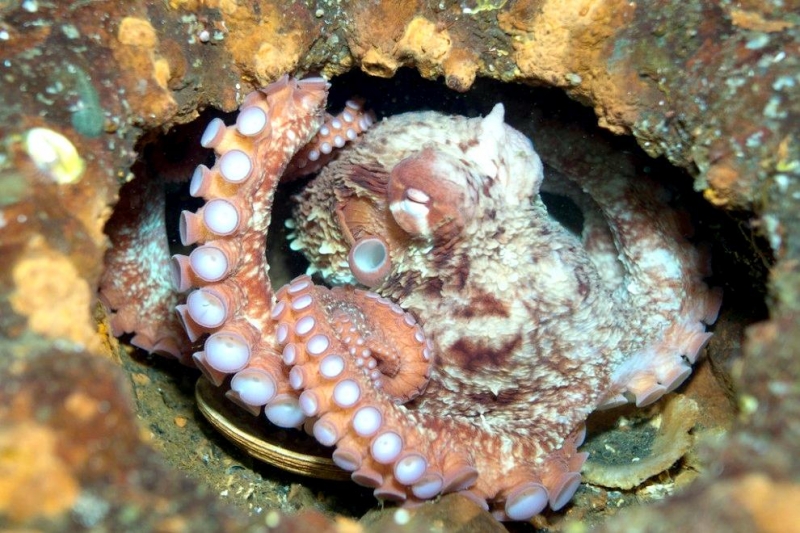
The largest individuals can weigh up to 150 lbs.
#GIANT PACIFIC OCTOPUS SKIN#
SHIM.Like its other close relatives, the octopus has pores under the skin called chromatophores. Species and Habitat Outline Giant Pacific Octopus. Giant Pacific Octopus Enteroctopus doflein. ” Giant Octopuses, Enteroctopus dofleini at ”. Illustration of Octopus life cycle by Tatiana Nederī.C. As for the mother, she waits until all the eggs have hatched then emerges from the cave and dies shortly afterwards due to the starvation she endured during the months she spent devoted to tending her eggs. Once they have developed enough mass they descend to the benthic zone. These tiny juveniles swim up to the surface joining other zoo plankton and spending weeks feeding on tiny phytoplankton. When the baby octopuses hatch they are referred to as paralave. During this time the female stays in the cave, not even leaving to eat, attending to the eggs by constantly blowing oxygenated water on to them. The incubation time for octopus eggs are six and a half months. This is a long process because on average a female octopus can lay up to 50,000 eggs. She hangs each group of eggs from the ceiling of the cave. From there she fertilizes each egg and gathers them in bundle of approximately 200. This search can take the future mother up to one month! Once the perfect place is found the female shuts herself in using rocks. Before a female is ready to fertilize the eggs she has to find a suitable den. Once given the sperm the female stores the package until she is ready to fertilize the eggs. Octopus reproduction starts when a male uses a specialized tentacle to pass two spermatophores (sperm packages) to the female.

Females die directly after they have finished laying and guarding to their egg however males live a slightly longer time. On average Giant Pacific Octopuses live 3-4 years. The second way is by releasing ink which temporarily blinds and confuses the predators.

There are two main ways octopuses can escape from predators, one way is through jet propulsion, giving them a burst of motion away from a predators. Animals who like to make an octopus into a meal are large fish such as halibut and lingcod, as well as some marine mammals like sea lions and dolphins. When eating, the octopus uses it strong beak to rip apart prey, and drill or bite into shells.Įven though the octopus seems invincible it does have some predators.

Using their highly developed eye sight they look for motion from prey, when the prey ventures too close or the octopus get close enough it will ambush the prey using its strong arms to prevent it from escaping. Time to time in some situations octopuses have been known to attack and eat sharks, and even other octopuses! Octopuses are nocturnal hunters, and very stealthy. The Giant Pacific Octopus’ preferred prey includes crabs, lobsters, shrimp, and clams. Generally they are a reddish-brown colour, they are capable of changing the texture of their skin and they have specialized cells call chromatophores that allow them to change their colour making it easy for them to camouflage into any surrounding – visit Octopus Skin Tricks for more information on octopus skin. Giant Pacific Octopuses can grow to a length of 5 meters and weigh up to 50 kilograms. What sets them apart is their colouring and size. Similar to all octopuses Giant Pacific Octopuses are invertebrates, with distinct large bulbous heads, eight arms, and a beak made of calcium carbonate. They prefer living in the depths of temperate ocean water. They are spotted anywhere from California up to Alaska and across to Japan. Giant Pacific Octopuses as their name implies are found in the northern part of the Pacific Ocean.


 0 kommentar(er)
0 kommentar(er)
